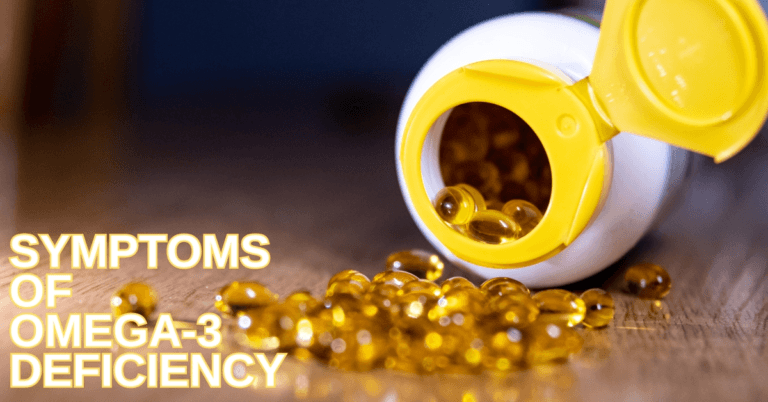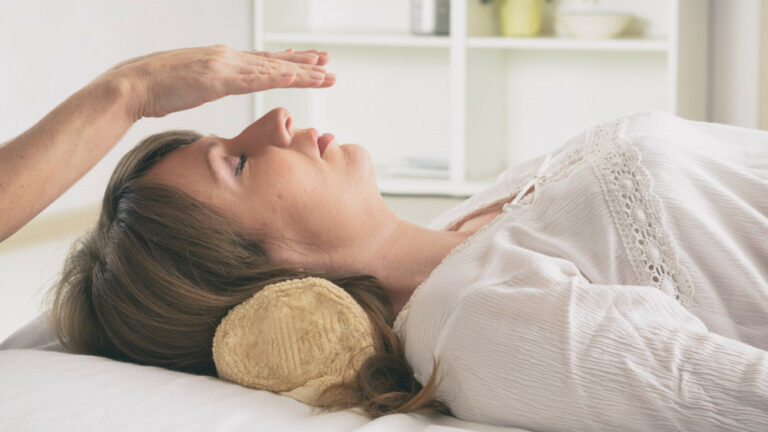Best Natural Healing Therapies For Migraines
Best Natural Healing Therapies For Migraines
Migraines are debilitating headaches that can significantly impact a person's quality of life. While medications are commonly used for migraine relief, many seek natural healing therapies as alternative or complementary approaches.
Natural healing therapies for migraines address the underlying causes, reduce symptoms, and promote overall well-being.
From herbal remedies and essential oils to acupuncture and relaxation techniques, many natural therapies are available to help manage and alleviate migraines.
This article will explore various natural healing therapies that have shown promise in relieving migraines, discussing their benefits, usage, and potential effectiveness.
Whether you're looking to complement your existing migraine treatment or prefer a more holistic approach, this article will provide valuable insights into natural healing therapies that may offer relief and improve your overall well-being.

What Causes Migraines?
Migraines are complex neurological conditions that various factors can trigger.
While the exact cause of migraines is not fully understood, researchers believe that a combination of genetic and environmental factors plays a role.
Here are some key factors that are thought to contribute to the development of migraines:
1. Genetic Predisposition
There appears to be a genetic component to migraines, as they often run in families. Certain genes that regulate brain chemicals and blood vessels have been identified as potential contributors.
2. Abnormal Brain Activity
Migraines are believed to be caused by changes in brain activity, particularly involving the trigeminal nerve, a major pain pathway.
These changes can lead to the release of inflammatory substances and neurotransmitters, triggering a cascade of events that result in migraines.
3. Hormonal Changes
Hormonal fluctuations, particularly in women, can trigger migraines. Many women experience migraines during menstruation, pregnancy, or menopause, suggesting a link between hormonal changes and migraine attacks.
4. Environmental Triggers
Various environmental factors can trigger migraines in susceptible individuals. Common triggers include certain foods (such as aged cheeses, chocolate, and processed meats), alcohol, caffeine, strong odours, bright lights, loud noises, changes in weather, and hormonal medications.
5. Stress And Emotional Factors
Stress, anxiety, and emotional factors like depression and excitement have been associated with migraines. While they may not directly cause migraines, they can trigger or exacerbate migraine attacks.
6. Sleep Disturbances
Both lack of sleep and excessive sleep can trigger migraines in some individuals. Maintaining a regular sleep schedule and practicing good sleep hygiene may reduce the frequency of migraines.
It's important to note that triggers can vary from person to person, and identifying individual triggers can be crucial for managing migraines effectively.
Keeping a migraine diary to track potential triggers and patterns may help identify personal triggers and aid in developing preventive strategies.
Consulting with a healthcare professional is recommended for a comprehensive evaluation and personalized management plan for migraines.
Natural Healing Therapies For Migraines
Regarding natural healing therapies for migraines, several options have shown promise in providing relief and reducing the frequency of migraine attacks. Here are some details and points to consider:

1. Herbal Remedies
People have used herbal treatments as safe, all-natural solutions to treat migraines for millennia. Butterbur, feverfew, and ginger are some of the herbs for migraine relief that are frequently explored.
The Petasites hybridus plant, which produces butterbur, has demonstrated the potential to lower migraine frequency and intensity.
It is thought to have anti-inflammatory qualities and could aid in relaxing blood vessels in the brain, lessening the symptoms of migraines.
Feverfew, a flowering plant native to Europe, has also been widely researched for its potential migraine-relieving effects.
It is thought to inhibit the release of inflammatory substances and prevent blood vessel constriction.
Ginger, known for its anti-inflammatory and analgesic properties, may help alleviate migraine-associated nausea and inflammation. These herbs are available in various forms, including capsules, extracts, and teas.
However, it is crucial to approach herbal remedies cautiously and consult a healthcare professional before use.
Some herbal remedies, including butterbur, may contain compounds that can be toxic if not properly processed or purified.
Additionally, herbs can interact with medications or have potential side effects, especially for individuals with certain medical conditions.
A healthcare professional can assess your health history, evaluate possible interactions, and guide the appropriate dosage and usage of herbal remedies.
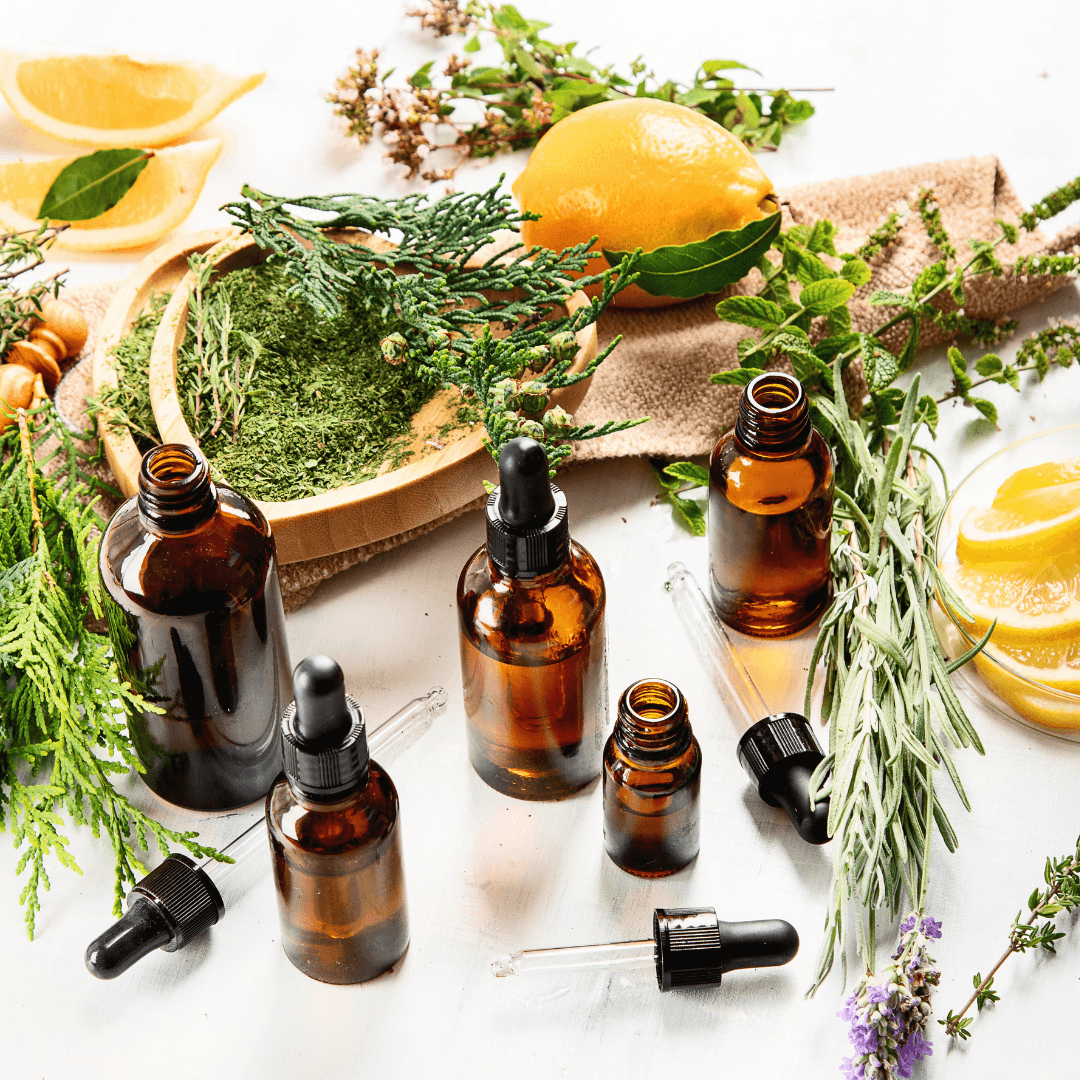
2. Essential Oils
Essential oils have gained popularity for their potential therapeutic benefits, including managing migraines.
With its cooling sensation, peppermint oil has been found to help relieve tension and promote blood flow, potentially alleviating migraine symptoms.
Lavender oil, known for its calming properties, may help reduce stress and anxiety, common triggers for migraines. It can also provide a soothing effect and aid in relaxation.
With its refreshing aroma, Eucalyptus oil can help clear nasal passages and relieve congestion, benefiting migraines associated with sinus issues.
Essential oils for migraines are typically recommended for inhalation or topical application. A diffuser can be filled with a few drops of essential oil for inhalation, or the oil can be breathed directly from the bottle.
The topical application is mixing a carrier oil, such as coconut or almond oil, with the essential oil before applying it to the neck's temples, forehead, or back.
However, using essential oils cautiously is crucial, especially if you have sensitive skin or respiratory issues. Conducting a patch test on a small skin area and watching for negative reactions is advised.
It's worth noting that essential oils may not work the same for everyone, and individual responses can vary. Some individuals may find significant relief from migraines with essential oils, while others may experience minimal or no effects.
It's always recommended to consult with a healthcare professional, particularly if you have any underlying health conditions or are taking medications.
They can guide the safe use of essential oils and help determine if they suit your circumstances.

3. Acupuncture
While acupuncture is not traditionally categorized as a natural healing therapy, many individuals exploring Natural Healing Therapies For Migraines may find it a valuable addition to their holistic approach to migraine management, complementing other natural remedies and lifestyle adjustments.
The traditional Chinese medical practice of acupuncture has gained popularity due to its possible advantages in treating migraines.
Thin needles are put into the body's acupuncture points—specific locations—during an acupuncture session. These points correspond to various meridian or energy routes in the body.
It is believed that acupuncture will activate these pathways, facilitating the passage of energy and reestablishing equilibrium.
Research suggests that acupuncture effectively reduces the frequency, duration, and intensity of migraines.
It is believed to work by stimulating nerve pathways and releasing endorphins, natural pain-relieving substances produced by the body.
Acupuncture may also promote blood flow, relax muscles, and alleviate tension, all of which can relieve migraines.
To ensure safe and effective treatment, seeking a qualified and licensed acupuncturist with experience treating migraines is important.
They will conduct a thorough assessment to understand your specific symptoms, medical history, and overall health.
The acupuncturist will develop an individualized treatment plan tailored to your needs, targeting the appropriate acupuncture points.
It's worth noting that while acupuncture has shown promise in migraine management, individual responses can vary.
Some individuals may experience significant improvement in their migraines with acupuncture, while others may find it less effective.
Discuss your interest in acupuncture with a healthcare professional who can provide guidance, address any concerns, and help determine if it is a suitable treatment option.

4. Relaxation Techniques
Relaxation techniques are crucial in managing migraines by addressing the underlying stress and tension that often contribute to headache attacks.
Deep breathing exercises help activate the body's relaxation response, promoting a sense of calm and reducing anxiety.
By taking slow, deep breaths and focusing on the breath, individuals can alleviate muscle tension, lower heart rate, and decrease stress levels.
Meditation is another effective relaxation technique that involves focusing the mind and achieving a state of deep relaxation and mental clarity.
Regular meditation practice has been shown to reduce the frequency and intensity of migraines by promoting peace, improving emotional well-being, and enhancing the body's ability to cope with stress.
Yoga combines physical postures, controlled breathing, and meditation to improve flexibility, strength, and relaxation.
Certain yoga poses, such as forward bends, gentle twists, and inversions, can help relieve neck, shoulder, and back tension, a common pressure associated with migraines.
Additionally, yoga promotes mindfulness, which can increase self-awareness and help individuals recognize and respond to early signs of migraine onset.
A progressive muscle relaxation technique involves gradually tensing and then relaxing various muscle groups. By intentionally relaxing their muscles, people can encourage physical and mental relaxation.
Progressive muscle relaxation can be very helpful for migraine sufferers. It relieves muscle tension and promotes peace and relaxation.
Incorporating these relaxation techniques into your daily routine can significantly benefit managing migraines.
Whether practiced individually or in combination, they offer effective and natural ways to reduce stress, relax the body and mind, and decrease the frequency and severity of migraine attacks.

5. Mindfulness-Based Stress Reduction (MBSR)
MBSR is not classified as a natural healing therapy. It can synergize effectively with Natural Healing Therapies for Migraines by providing individuals with the mental and emotional tools to better integrate and benefit from these holistic approaches in their migraine management journey.
Mindfulness-Based Stress Reduction (MBSR) is a well-established program developed by Jon Kabat-Zinn that combines mindfulness meditation, gentle yoga, and mind-body exercises.
MBSR aims to cultivate a non-judgmental awareness of the present moment, allowing individuals to observe their thoughts, sensations, and emotions without attachment or judgment.
By practicing mindfulness, participants learn to develop new relationships with their experiences and develop coping mechanisms for managing stress and pain.
Studies have shown that MBSR can effectively reduce the impact of migraines and improve the quality of life for individuals who experience migraines.
By cultivating mindfulness, individuals become more aware of their triggers, early warning signs, and how stress influences their migraines.
This heightened awareness allows them to implement effective coping strategies, such as deep breathing, meditation, and relaxation techniques, to prevent or manage migraine attacks.
Furthermore, MBSR promotes emotional regulation, which can benefit individuals who experience anxiety or depression related to migraines.
It enhances self-compassion and acceptance, reducing emotional distress and improving overall well-being.
By reducing stress levels and promoting relaxation, MBSR can potentially decrease the frequency and intensity of migraines and improve individuals' ability to cope with migraine-related challenges.
Participating in an MBSR program typically involves attending weekly sessions led by a qualified instructor, practicing mindfulness meditation and gentle yoga exercises, and engaging in group discussions and activities.
It is important to note that MBSR is not a standalone treatment for migraines but can be used as a complementary approach alongside other medical treatments and lifestyle modifications.
If considering MBSR for migraines, it is advisable to seek qualified MBSR instructors with proper training and experience working with individuals with migraines.
They can guide you through the program, offer support, and help tailor the techniques to your needs.
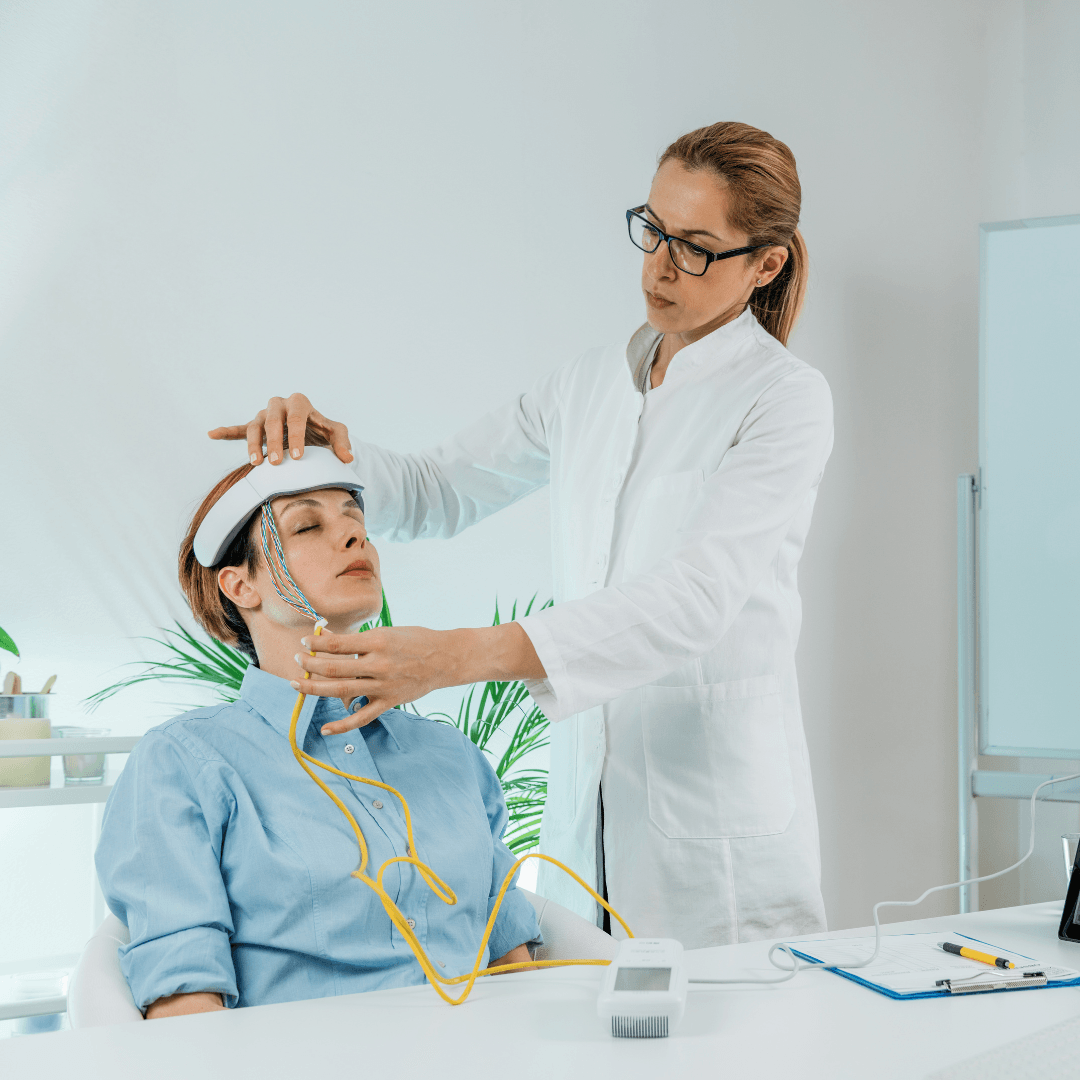
6. Biofeedback
Biofeedback therapy is a non-invasive technique that allows individuals to gain conscious control over certain bodily functions using real-time feedback from monitoring devices.
By using sensors to measure physiological parameters such as muscle tension, heart rate, skin temperature, and brainwave activity, individuals can become aware of subtle changes in their body's responses and learn techniques to regulate them.
In migraines, biofeedback therapy has shown promise in reducing the frequency and intensity of headache attacks.
During biofeedback sessions, individuals receive visual or auditory feedback based on their physiological responses.
For example, they may see a graph representing their muscle tension or skin temperature or hear a tone corresponding to their heart rate variability.
With this feedback, individuals can learn to recognize early signs of stress or tension, such as increased muscle tension or decreased skin temperature, often preceding a migraine attack.
Through guided practice and training, individuals can use relaxation techniques, deep breathing exercises, or visualization to consciously influence their physiological responses and return to a balanced state.
Over time, this can help prevent or minimize headache attacks. Biofeedback therapy empowers individuals to manage their migraines actively and provides a valuable tool for self-regulation and stress reduction.
It is important to note that biofeedback therapy is typically conducted under the guidance of a trained healthcare professional, such as a biofeedback therapist or psychologist.
They will customize the treatment plan to address specific migraine-related concerns and guide individuals through learning and practicing the techniques.
Biofeedback therapy is often part of a comprehensive migraine management approach, combining lifestyle modifications, preventive measures, and other therapeutic interventions.

7. Dietary Changes
While dietary modifications can be a significant part of managing migraines, exploring the synergy between these changes and Natural Healing Therapies For Migraines to create a holistic approach to migraine relief and prevention is worth exploring.
Making certain nutritional adjustments can help relieve symptoms and decrease the frequency of migraine attacks. Diet has a vital role in the management of migraines.
One approach is identifying and avoiding potential trigger foods that vary among individuals.
Common trigger foods include caffeine, alcohol, processed meats (hot dogs and deli meats), aged cheeses, and artificial sweeteners.
Keeping a food diary and tracking the correlation between food intake and migraine episodes can help identify specific triggers.
In addition to avoiding trigger foods, adopting a well-balanced diet can contribute to overall health and reduce the frequency of migraines.
Including various fruits, vegetables, whole grains, and lean proteins in your meals can provide essential nutrients and support optimal brain function.
Certain foods, such as magnesium-rich foods (like spinach, nuts, and whole grains) and foods containing omega-3 fatty acids (such as fatty fish and flaxseeds), have reduced the risk of migraines.
It's important to note that dietary changes may not immediately affect migraines, and individual responses can vary.
Working with a medical expert, like a certified dietitian, can offer direction and tailored recommendations based on your unique nutritional needs and triggers.
They may assist you in developing a balanced food plan, offer suitable substitutes, and ensure you satisfy your dietary needs while successfully controlling your migraines.
A comprehensive migraine management plan should incorporate dietary modifications, other lifestyle changes, medication, and other therapies.
Each individual's experience with migraines is unique, and it may take time to identify the dietary factors that influence your specific condition.
Patience and persistence are key when exploring dietary changes for migraine management.
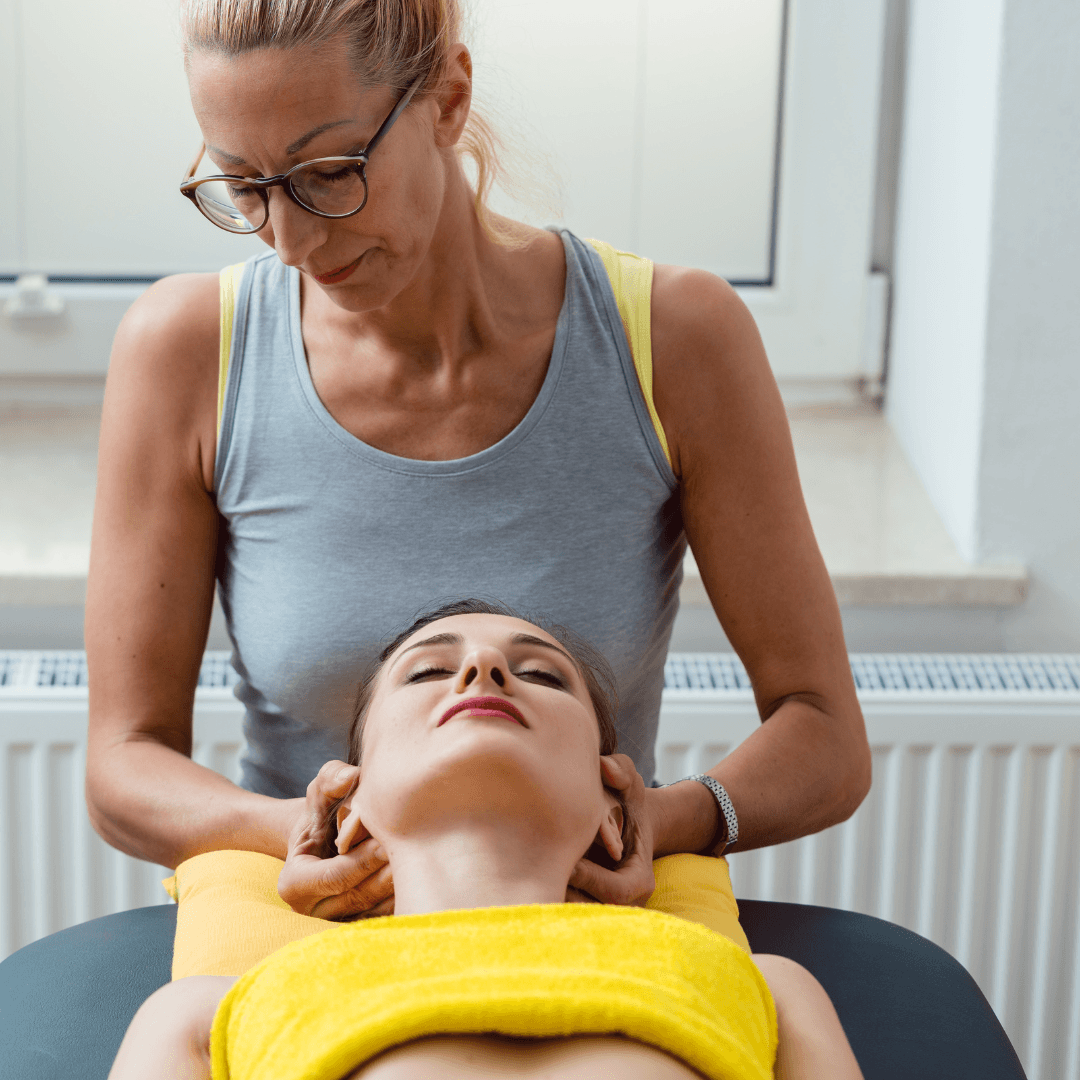
8. Physical Therapy
Physical therapy can be a valuable treatment option for individuals with migraines related to muscle tension, posture-related issues, or musculoskeletal imbalances.
A skilled physical therapist can assess your specific condition, identify areas of muscle tightness, joint dysfunction, or postural abnormalities, and develop a personalized treatment plan to address these underlying factors.
Physical therapy for migraines may involve manual therapy, therapeutic exercises, and relaxation techniques.
Manual therapy techniques, such as soft tissue or joint mobilization, can help release muscle tension, improve circulation, and restore proper joint alignment.
Therapeutic exercises are designed to strengthen weak muscles, improve flexibility, and correct postural imbalances that may contribute to migraines.
These exercises may include stretching, strengthening, and stabilization exercises.
Furthermore, physical therapists can teach relaxation techniques, such as progressive muscle relaxation or breathing exercises, to help individuals manage stress and tension.
These techniques can reduce muscle tension, promote relaxation, and alleviate migraine symptoms.
It's important to note that physical therapy for migraines should be performed under the guidance of a licensed physical therapist.
They will assess your condition, develop an individualized treatment plan, and guide you through the exercises and techniques.
Physical therapy is often part of a comprehensive migraine management approach, combining other treatments, lifestyle modifications, and self-care strategies.
If you suspect that muscle tension or postural issues contribute to your migraines, it is recommended that you consult with a healthcare professional to determine whether physical therapy is suitable for you.
They can evaluate you properly, refer you to a qualified physical therapist, and help coordinate your overall migraine treatment plan.
Conclusion
Natural Healing Therapies For Migraines offer a promising approach to managing this debilitating condition.
From herbal remedies and essential oils to relaxation techniques and acupuncture, these therapies provide alternative options for individuals seeking natural and holistic ways to alleviate migraine symptoms.
While the effectiveness of these therapies may vary among individuals, they can offer valuable adjuncts to conventional treatments and lifestyle modifications.
Consult with healthcare professionals, such as herbalists, acupuncturists, or naturopathic doctors, to ensure the safe and appropriate use of these therapies.
Additionally, it's important to remember that natural healing therapies may not be standalone solutions but can be integrated into a comprehensive migraine management plan tailored to each individual's needs.
By exploring these natural healing therapies and working closely with healthcare professionals, individuals with migraines can empower themselves to find relief and improve their overall well-being.
I trust you enjoyed this article on the Best Natural Healing Therapies For Migraines. Please stay tuned for more blog posts shortly. Take care!
JeannetteZ
>>>Please click here to read my all-inclusive article about A Comprehensive Guide To Healing Naturally<<<
>>>Are you interested in Natural Healing through Herbs? Please click here for my #1 Recommendation<<<
Your Opinion Is Important To Me
Do you have thoughts, ideas, or questions? I would love to hear from you. Please leave your questions, experience, and remarks about the Best Natural Healing Therapies For Migraines in the comments below. You can also reach me by email at Jeannette@Close-To-Nature.org.
Disclosure
This post may contain affiliate links. As an Amazon Associate and other affiliate programs, I earn from qualifying purchases at no extra cost to you. Please read my full affiliate disclosure.
You might also enjoy these blog posts:
Best Tips For Keeping Horses Cool In Summer
Most Expensive Horses In The World
Best Ways To Fight The Aging Process



